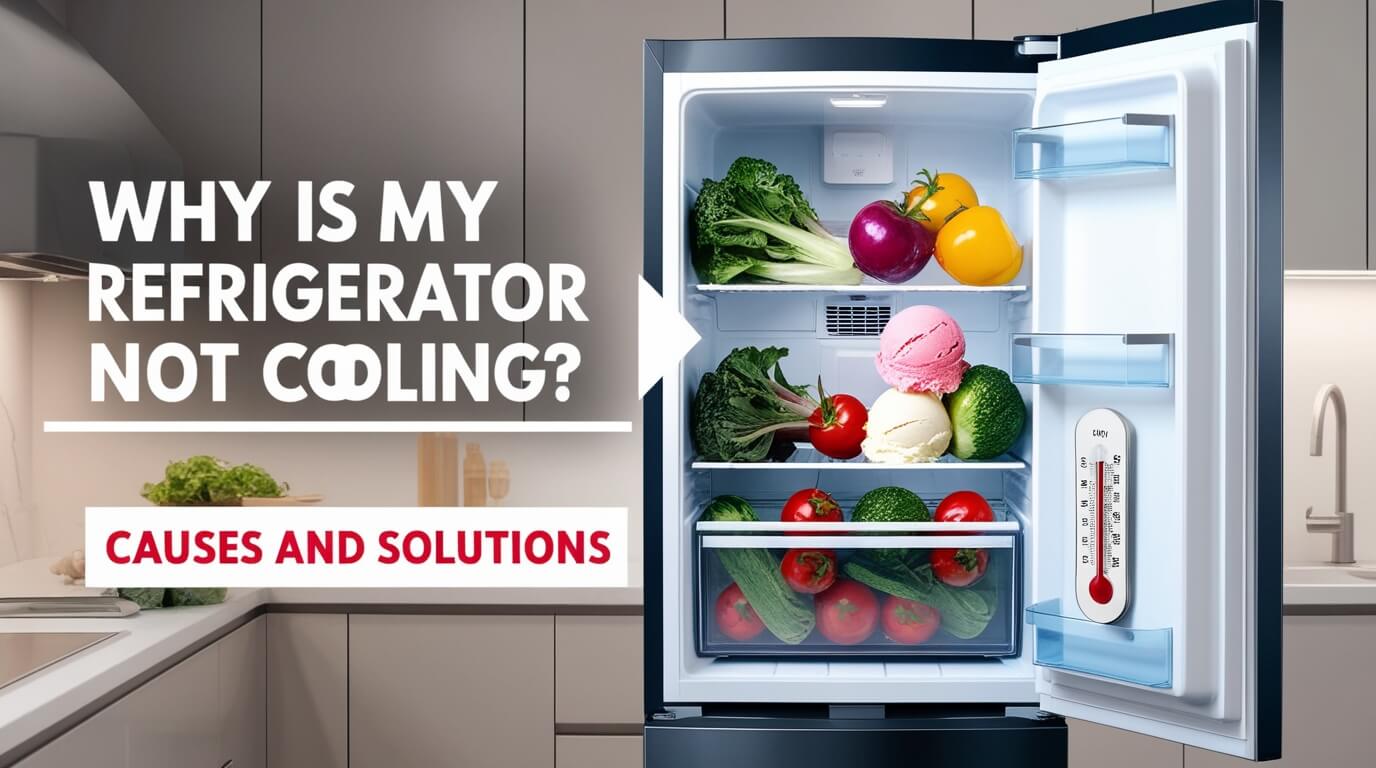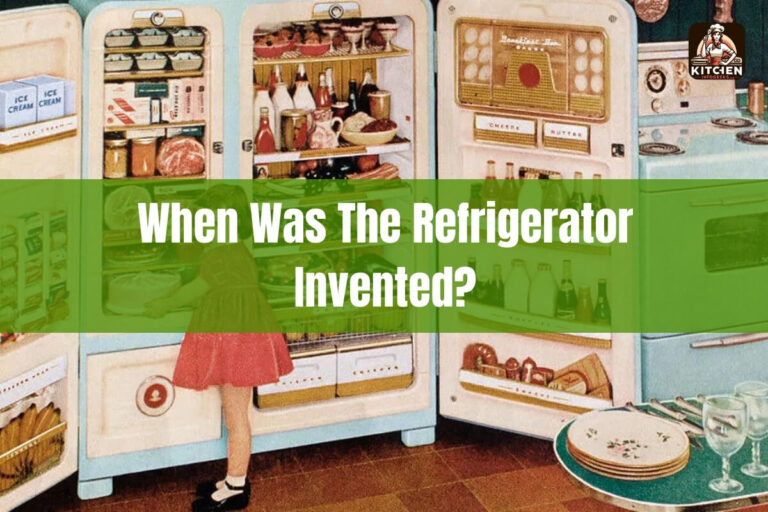
Opening your fridge to find warm food can be frustrating. A refrigerator that’s not cooling is often caused by dirty condenser coils, a faulty thermostat, or blocked vents. These issues can usually be fixed at home, but sometimes professional help is needed. This guide covers common causes, DIY fixes, and when to call an expert for your refrigerator cooling problems.
let’s get your fridge back to its chilly self.
Refrigerator’s Cooling System
To tackle cooling issues, it helps to know how your fridge works.
How a Refrigerator Works
Refrigerators use a clever cycle of compression and expansion to keep your food cold. They pump a special fluid called refrigerant through a system of coils. As the refrigerant moves, it absorbs heat from inside the fridge and releases it outside.
Key Components of a Refrigerator
Your fridge has several important parts:
- Compressor: The heart of the cooling system
- Condenser coils: Release heat outside the fridge
- Evaporator coils: Absorb heat from inside
- Thermostat: Controls the temperature
- Fan: Circulates cold air
When any of these parts fail, your fridge might stop cooling properly.
Common Signs of a Refrigerator Not Cooling
How can you tell if your fridge isn’t cooling right? Look out for these signs:
Warm Interior
If the inside of your fridge feels warm, that’s a clear sign something’s wrong. You might notice this first in items that should be very cold, like milk or butter.
Spoiling Food
Food going bad faster than usual? Your fridge might not be cold enough. This can lead to waste and potential health risks.
Unusual Noises
Strange sounds coming from your fridge could mean trouble. Listen for buzzing, clicking, or loud humming noises.
Excessive Condensation
Too much moisture inside your fridge often means it’s working too hard to stay cool. You might see water droplets on the walls or shelves.
Top Reasons Why Your Refrigerator Isn’t Cooling
Now, let’s look at why your fridge might be warming up.
Dirty Condenser Coils
Dusty condenser coils can’t release heat properly. This makes your fridge work harder and cool less effectively.
Faulty Thermostat
A broken thermostat can’t regulate temperature correctly. Your fridge might think it’s colder than it really is.
Blocked Vents
Stuffing your fridge too full can block the vents that circulate cold air. This leads to uneven cooling and warm spots.
Compressor Issues
The compressor is crucial for cooling. If it’s not working right, your whole fridge suffers.
Refrigerant Leaks
Low refrigerant levels mean less cooling power. Leaks need professional repair.
Damaged Door Seals
Worn or dirty door seals let cold air escape and warm air enter. This makes your fridge work overtime.
Troubleshooting a Refrigerator That’s Not Cooling
Before calling for help, try these DIY fixes:
Check the Power Supply
It sounds simple, but make sure your fridge is plugged in and the outlet works. Check your circuit breaker too.
Inspect and Clean Condenser Coils
Cleaning your condenser coils can often solve cooling issues:
- Unplug the fridge
- Find the coils (usually behind or under the fridge)
- Vacuum or brush away dust and debris
- Plug the fridge back in
Adjust Thermostat Settings
Your thermostat might be set too high. Try lowering it and wait 24 hours to see if it helps.
Clear Blocked Vents
Rearrange items in your fridge to allow for better air flow. Don’t overstuff shelves or block vents.
Examine Door Seals
Clean the door seals with warm, soapy water. Check for any damage or gaps when the door is closed.
When to Call a Professional
Sometimes, DIY fixes aren’t enough. Call an expert if you notice:
Signs of Serious Issues
- Fridge is completely warm
- Compressor runs constantly but doesn’t cool
- You hear unusual noises or smell burning
Refrigerant Handling
Never try to fix refrigerant leaks yourself. This requires special tools and training.
Compressor Replacement
Replacing a compressor is a complex job best left to professionals.
Preventing Future Cooling Issues
Keep your fridge running smoothly with these tips:
Regular Maintenance Tips
- Clean condenser coils every 6-12 months
- Check and clean door seals regularly
- Defrost manual-defrost freezers when ice builds up
- Keep the fridge level to prevent door seal issues
Proper Food Storage
Don’t overload your fridge. Leave space for air to circulate. Cool hot foods before refrigerating.
Optimal Temperature Settings
Set your fridge between 37°F and 40°F (3°C to 4°C). Keep your freezer at 0°F (-18°C).
Energy Efficiency and Cooling Performance
A properly cooling fridge isn’t just about fresh food – it’s also about saving energy.
Impact on Electricity Bills
An inefficient fridge can significantly increase your energy costs. Keeping it in good shape helps your wallet and the environment.
Eco-Friendly Practices
- Don’t leave the door open longer than necessary
- Cover liquids to reduce moisture in the fridge
- Use the power-saving mode if your fridge has one
When to Consider Replacing Your Refrigerator
Sometimes, it’s better to replace than repair.
Age and Efficiency
Most refrigerators last 10-20 years. If yours is older, a new, energy-efficient model might be a wise investment.
Cost of Repairs vs. Replacement
If repairs cost more than half the price of a new fridge, consider replacing it.
Conclusion
A refrigerator not cooling properly can be a real headache. But with the right knowledge, you can often fix the problem yourself or know when to call for help. Regular maintenance and proper use go a long way in keeping your fridge running smoothly.
Remember, a well-functioning refrigerator isn’t just about cold food – it’s about energy efficiency, reducing food waste, and peace of mind. By understanding your fridge and addressing issues promptly, you’ll keep your cool, even when your fridge loses its chill.
Don’t let a warm fridge stress you out. With these tips and tricks, you’re well-equipped to handle most refrigerator cooling issues. Stay cool and keep those leftovers fresh!






